#lagoon nebula
Text

Stormy Seas in the Lagoon © Hubble
#lagoon nebula#nasa#hubble telescope#space#astrophotography#stars#night sky#galaxy#universe#sagittarius#astronomy#planet#cosmos#solar system
2K notes
·
View notes
Text
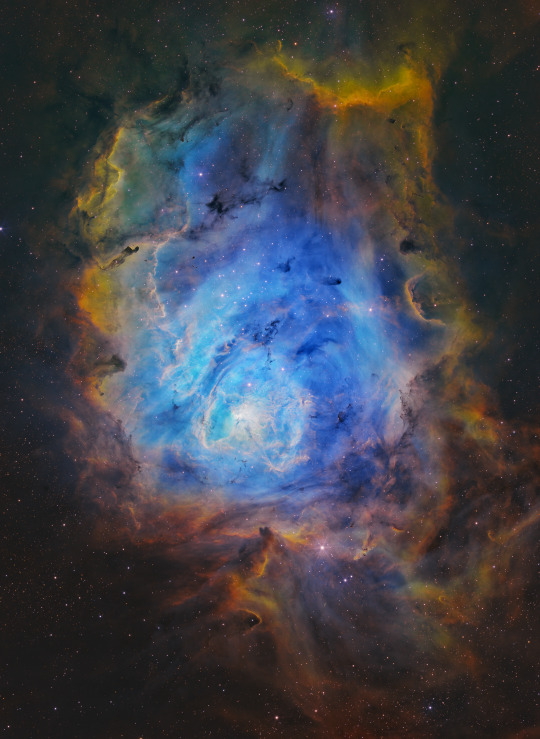
The Lagoon Nebula, M8 // RobDSJ
Here, the Lagoon Nebula is being displayed in the "SHO palette." This is the palette commonly used by the Hubble Space Telescope in its images, where you map the light produced by three elements, sulfur (S), hydrogen (H), and oxygen (O) to three colors, red, green, and blue.
The Lagoon Nebula has a cluster at the center responsible for ionizing the gas that is only about 2 million years old. The gas stretches across the sky a length equivalent to about 3 full moons.
#astronomy#astrophotography#messier marathon#nebula#emission nebula#star-forming region#lagoon nebula#messier#messier 8#M8#NGC 6523#Sh2-25#sagittarius
91 notes
·
View notes
Text
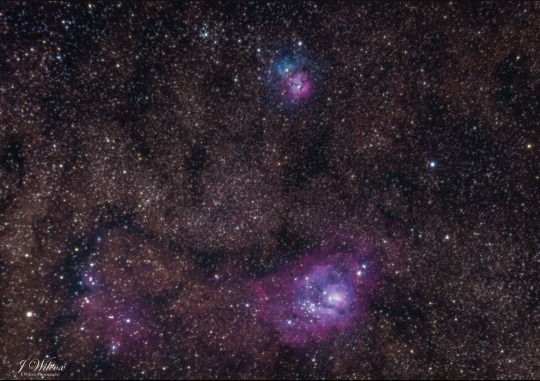
The Lagoon Nebula and the Trifid Nebula
Jonathon Wilcox on Instagram
#shared with permission#lagoon nebula#trifid nebula#astrophotography#space#astronomy#mine#curators on tumblr#edited by me
148 notes
·
View notes
Photo

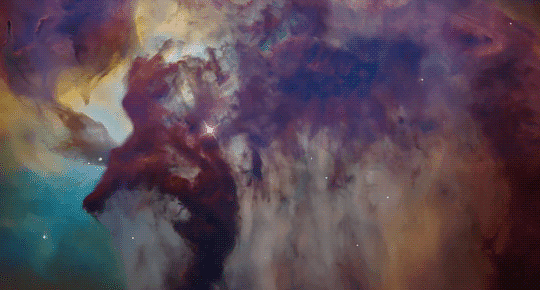
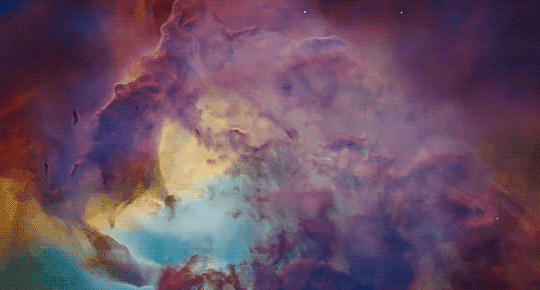
Flying through the Lagoon
#space#lagoon nebula#universe#nasa#astronomy#galaxy#stars#night#sky#planets#astrophotography#solar system
2K notes
·
View notes
Text
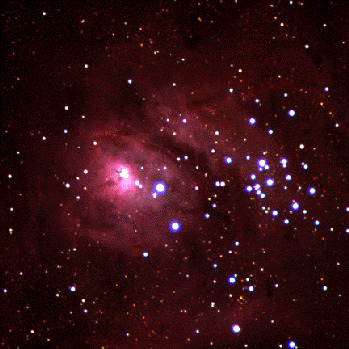
M8: An Open Cluster in the Lagoon - January 27th, 1996.
"The large majestic Lagoon Nebula is home for many young stars and hot gas. The Lagoon Nebulae is so large and bright it can be seen without a telescope. Formed only several million years ago in the nebula is the open cluster known as NGC 6530, whose young stars show their high temperature by their blue glow. The nebula, also known as M8 and NGC 6523, is named "Lagoon" for the band of dust seen to the left of the open cluster's center. A bright knot of gas and dust in the nebula's center is known as the Hourglass Nebula. Star formation continues in the the Lagoon Nebula as witnessed by the many globules that exist there."
#nasa#space#cosmos#universe#astronomy#astrophysics#astrophotography#lagoon nebula#open cluster#stars
62 notes
·
View notes
Text

SPACEMAS DAY 11 ✨🪐🌎☄️☀️🌕
Ridges of glowing interstellar gas and dark dust clouds inhabit the turbulent Lagoon Nebula. Also known as M8, The bright star forming region is about 5,000 light-years away. It makes for a popular stop on telescopic tours of the constellation Sagittarius which lies toward the center of our Milky Way Galaxy. It is dominated by the red emission of ionized hydrogen atoms that are recombining with stripped electrons. This view of the Lagoon's central region reaches about 40 light-years across. The bright hourglass shape near the center of the frame is gas ionized by radiation and extreme stellar winds from a massive young star.
Image Credit: Josep Drudis
#astronomy#space#science#universe#spacemas#day 11#nebula#lagoon nebula#lagoon#electrons#stellar winds#sagittarius#constellation#milky way#galaxy#young star#telescope#follow#like#reblog#the first star#the first starr#thefirststar#thefirststarr#nasa#apod#light year#space blog#tumblr#star forming region
63 notes
·
View notes
Note
Trick or Treat!
For you, one of my favorite types of astronomical objects!

A Nebula! Specifically, the Lagoon Nebula! This part is only 4 light-years across, the full nebula is 55 light-years wide and 20 light-years tall! The different colors that you see in nebulae are from the different temperatures and the different kinds of gas! Singly-ionized hydrogen and doubly-ionized oxygen look very different, and scientists can use their spectra to map out a nebula and see where stars are being formed!
This image was taken on Hubble's WFC3 camera to celebrate Hubble's 28th birthday!
#my research in undergrad was all about nebulae and HII regions I could talk about them for ages I love them so much#happy halloween!#halloween#trick or treat#astronomy#nebulae#space#lagoon nebula#swampsiren-piratefairy
26 notes
·
View notes
Text

स्वर्गम्🌌🌈
By:
instagram
#astronomy#space photography#outer space#space#space aesthetic#nebula#lagoon nebula#astrophotography#messier 8#deep space#Instagram
7 notes
·
View notes
Text

Cosmic Lagoon
103 notes
·
View notes
Photo

Bats flying into a cave. Inspired by a combination of the Rosette and Lagoon nebulae.
#art#cave#bats#nebula#stars#red#pink#scifi#space#cosmos#universe#rosette nebula#lagoon nebula#Halloween#digital art#scifi art#space art#bok globule#fantasy#astro artist#space aesthetic#space artist#artists on tumblr
109 notes
·
View notes
Photo
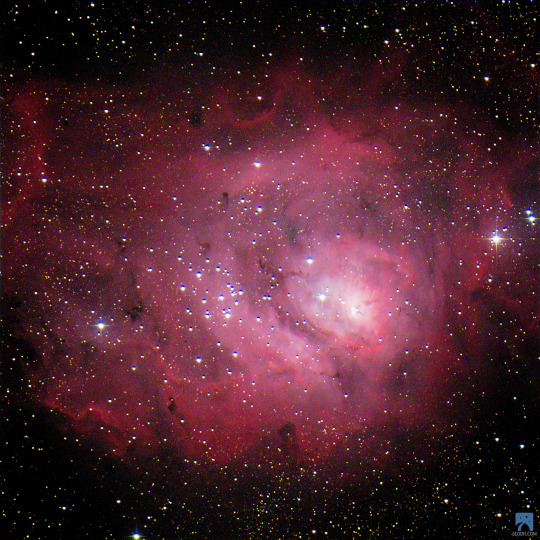
This is the Lagoon Nebula! 💗💗💗
The beautiful lagoon shaped portion is created from aggressive stellar winds pushing the nebulae’s gas and dust aside. Many of the stars here are young, hot O-type stars that are more than 200,000 times brighter than the Sun! ✨✨✨
Taken by me (Michelle Park) using the Slooh Canary Two telescope on July 23rd, 2022 at 22:31 UTC.
#astroimages#astro#astronomy#astrophysics#universe#space#night#telescope#telescopes#astrophotography#photography#slooh#slooh canary two#canary two telescope#lagoon nebula#messier 8#emission nebula#emission nebulae#nightsky#star#stars#nebula#nebulae#red#cosmos#aesthetic
170 notes
·
View notes
Text
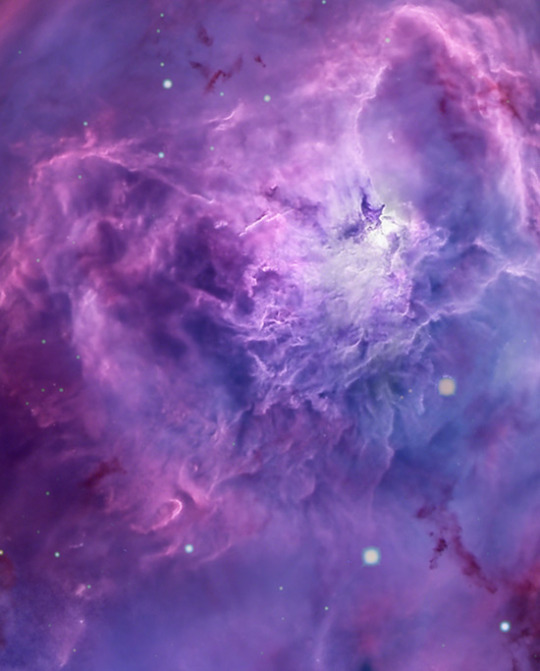
The Deep Lagoon © JDrudis-CSasse
#lagoon nebula#nasa#astrophotography#space#stars#night sky#solar system#universe#astronomy#galaxy#cosmos#planet
1K notes
·
View notes
Text

The Lagoon Nebula, M8 // John Dziuba
Zoomed-in, now you can see some of the concentrations of interstellar dust at the heart of the Lagoon Nebula. The darkest and densest parts are called Bok globules where new stars are being formed. These globules are on average 10,000 astronomical units* in diameter.
*An astronomical unit is the distance between the Earth and the Sun, or about 93 million miles.
#astronomy#astrophotography#messier marathon#nebula#emission nebula#star-forming region#lagoon nebula#messier#messier 8#M8#NGC 6523#Sh2-25#sagittarius
58 notes
·
View notes
Text

The Deep Lagoon
12 notes
·
View notes
Text

✧。:*▹ Lagoonebulaic
[ PT: Lagoonebulaic end PT ]

✧ Lagoonebulaic is a SPAN nebulaic gender related to the Lagoon nebula, or Messier 8 or NGC 6523 located in Sagittarius.
✧ Pronouns can include:
lagoon/lagoon/lagoons/lagoons/lagoonself
neb/nebula/nebulas/nebulas/nebulaself
cloud/cloud/clouds/clouds/cloudself

ID: a white DNI with a panel of the manga Oyasumi Punpun with 5 kids doing a joint pose. Words are black on the right side: “DNI: anti- ‘contradictory’ labels, anti-mogai, terf, gatekeeper, anti-decolonization, believes ‘narc abuze’ is real, demonizes ‘scary/evil’ disorders + labels.” End ID.
#Lagoonebulaic#nebulaic#lagoon nebula#m8#ngc 6523#lgbtqia+#mogai haven#mogai coining#liom coining#coined by me#new term#new gender#new flag#nox's terms#nox's flags#fav flags#lagoonself#nebulaself#cloudself#SPAN#spangender#has id#has pt
10 notes
·
View notes
Text
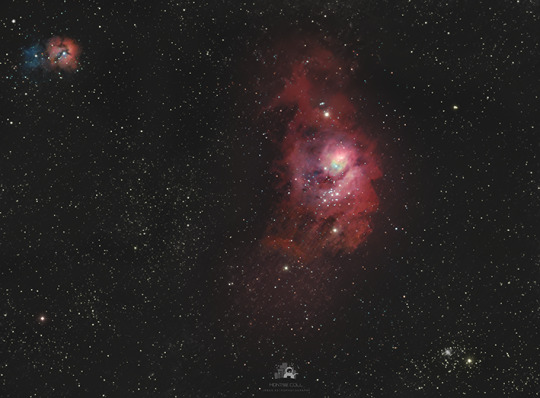
The Trifid (M20, NGC 6514) & The Lagoon Nebula ( M8, NGC 6523)
Constellation Sagittarius.
Distance to Earth: 5.200 & 4.100 light years.
DSLR Canon Rebel T3i
Montcada i Reixac (Bortle 8)
#astrophotography#astrophotos#astro observations#urban astrophotography#astronomy#original photographers#cosmos#universe#original photographic works#lagoon nebula#messier#messier 8#messier 20
20 notes
·
View notes